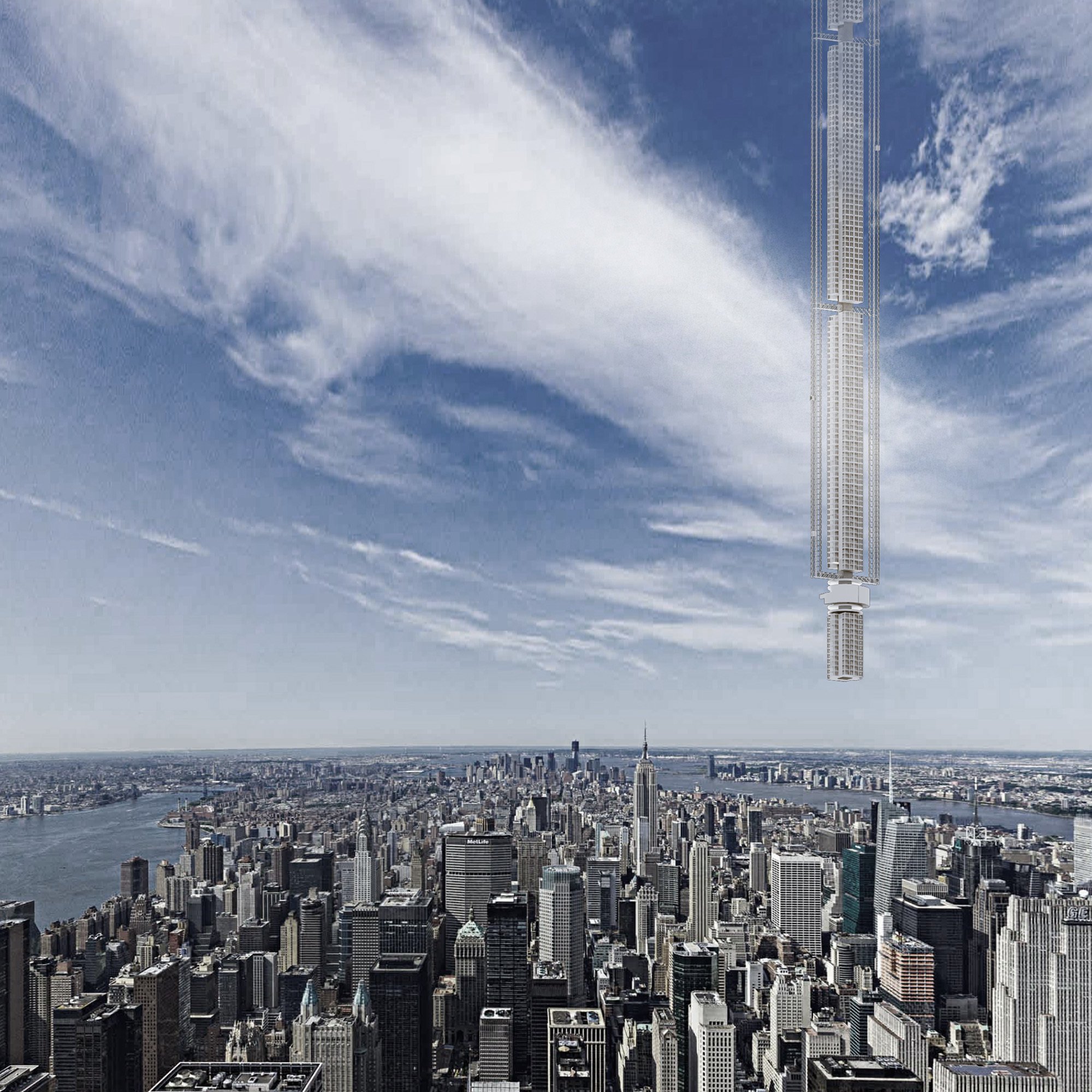Architectural Firm Proposes Construction of Skyscraper Suspended From Orbiting Asteroid
For the most part, I have used this blog to talk about practical matters such as space launch facilities and rocket engines. I have also talked about plans for near future developments of space technology. Today I thought I would go a little further out and talk about an interesting but radical proposal for space infrastructure.
The New York architectural firm Cloud Architecture Office has proposed erecting giant skyscrapers by dangling them from asteroids in Earth orbit. CAO calls the idea the Universal Orbital Support System. An asteroid would be placed in orbit about thirty thousand miles above the surface of the Earth. A very strong cable would be dropped from the asteroid and a tall building would be suspended from the cable. They call the proposed first building “Analemma Tower.”
One major advantage of such a building is that it would be totally portable. It can be constructed anywhere and then attached to the asteroid to be moved to any orbital path that is desirable. For instance, if the Tower is build in Dubai, it would cost only twenty percent of what it would cost if it were build in New York City.
The Tower would draw power from space-based solar panels which would always be exposed to the sun and would generate continuous power. Water will be captured and recycled from clouds and rainwater. Elevators would be driven electromagnetically and would not need any cables.
The name analemma comes from a term which refers to the figure-eight path that the sun traces during the day as seen from any one place on Earth. The asteroid that holds the building will be in what is called a geostationary orbit which moves with the rotation of the Earth. The Tower could describe a figure-eight orbit that could pass over New York, Atlanta, Havana, Panama City and cities on the West Coast of South America every day.
The CAO plans call for creating different vertical sections of the tower. Starting at the top part of the tower, the different sections would be:
Funerary
Reliquary
Worship
Monument
Residential
Gardens and agricultural
Office, business and commercial
Transport, shopping, dining, entertainment.
The building would extend from about five miles to about twenty miles above the Earth. The top would get about forty more minutes of sunlight per day than the bottom because of its altitude. However, the extreme temperature and pressure conditions would make it difficult and dangerous for habitation.
Although GAO admits that there would be many technical challenges and problems, not to mention great expense to construct such a building, they say that “it taps into the desire for extreme height, seclusion and constant mobility.” GAO is confident that the Tower would pay for itself with extremely expensive prices per square foot, increasing with elevation.
GAO points out that there have been important developments with respect to the utilization of asteroids. NASA has rendezvoused with and landed on a comet and is planning a mission for 2021 to capture and relocate an asteroid. If this second mission is successful, then utilizing an orbiting asteroid to anchor a building is definitely within the realm of possibility.
Artist’s concept of Analemma Tower dangling over New York:
Credit: Clouds Architecture Office.
